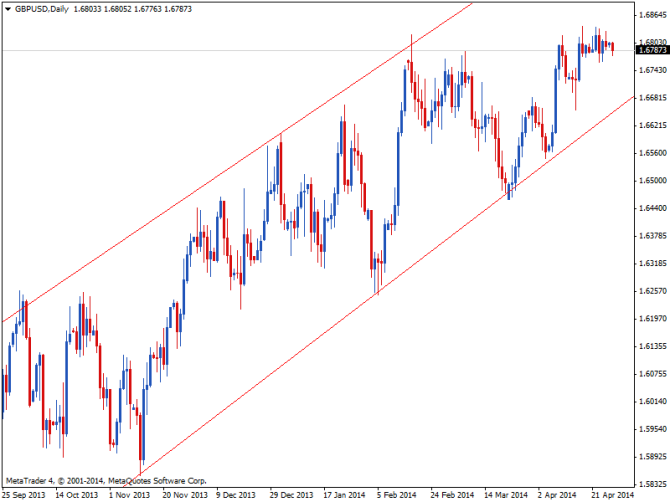The latest economic events in the U.K. haven’t been enough to push GBP/USD in a clearer direction, as most of the releases have failed to impress. The BOE (Bank of England) monetary policy meeting minutes were just released and although it showed a unanimous vote in keeping policy unchanged, it also showed that policymakers had mixed views when it comes to economic recovery.
For one, many expressed concern about the weak inflation in the country. This could prevent the BOE from tightening monetary policy, especially since the annual CPI figure is far below the central bank’s 2% target. Hiking interest rates too early might wind up pushing price levels lower, which could spur concerns about stagflation once more.
Update: See how to trade the UK GDP with GBP/USD.
Aside from that, policymakers also expressed concern about the jobs situation. Even though the recent jobless rate is moving closer to the BOE’s target for considering rate hikes, many mentioned that this was just mostly a result of a rise in self-employment and that there’s still considerable slack in the labor sector.
The retail sales report came in stronger than expected and posted a 0.1% gain instead of the estimated loss. However, the previous month’s figure was revised lower, indicating that consumer spending is still facing challenges.
With that, GBP/USD is still stuck around its current highs at the 1.6800 to 1.6825 levels, waiting for a clearer direction from fundamentals. The upcoming US data releases could be more crucial in pushing for a breakout.
In particular, the GDP release and FOMC statement might be big movers among dollar pairs, including Cable. Weak growth figures might remind traders that the US economy is still facing plenty of headwinds and this might be confirmed by the FOMC rate decision. This one is expected to be a little more cautious compared to their previous statement.
Also due in the coming days is the non-farm payrolls report, which is also a key report when it comes to setting dollar direction in the longer run. Recall that the previous release was weaker than expected and undermined dollar strength. If this is followed by another weak reading for April, the dollar might continue to lose ground.
Bear in mind though that the safe-haven dollar is currently being supported by risk aversion, as traders are closely watching the ongoing tension in Russia. Worsening conflict could be bearish for riskier and higher-yielding currencies, much to the benefit of lower-yielding ones like the yen and dollar.

For more, see the Pound/dollar prediction
